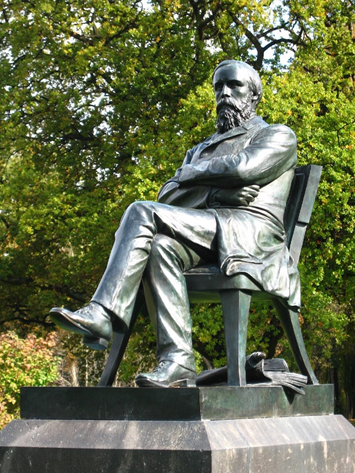Socialising Land Rents — Government Land Sales Example
The early use of government land sales as a land value capture instrument had a decisive effect on Canterbury’s transport spatial planning history. The establishment of rail in the region illustrates this well.
Canterbury Rail-era from 1857

In 1857, the Canterbury province decided to construct the 2.6 km Lyttelton rail tunnel, a major evolution of the region’s spatial plan. The Superintendent election that year had the rail tunnel as its focus, with the pro-rail candidate William Moorhouse winning the election. The tunnel was opened in 1867 and cost £200,000, which was financed by a provincial government loan. Canterbury had only 12,000 people in 1857, so land sales emerged as the best revenue source to repay the debt.
This was a practical application of Wakefield’s sufficient land price theory: the concept that adding infrastructure and amenity to land can raise its commercial value above a sufficient selling price. Land sales can then repay the incurred costs. In essence, this is a land value capture mechanism.
In effect, Canterbury had created an infrastructure provision model involving: democratic governance, spatial planning, and an infrastructure-funding mechanism.
It’s likely that Canterbury’s success with rail in the 1860s was a leading factor contributing to Vogelism in the 1870s (massive expansion of the railways as a nation-building exercise).
Premier Julias Vogel’s greater centralisation of transport provision had undoubted benefits, including standardisation of the rail gauge. However, the scheme wasn’t as successful as it could have been.
Vogel wanted over 2 million hectares of ‘waste’ land around his proposed rail corridors as a Crown endowment. This would have allowed the Crown to own land close to the newly constructed rail corridors which it could then sell at high prices to fund the infrastructure costs. In 1873, Parliament voted against the measure. Vogel’s scheme couldn’t capture the value it created, meaning infrastructure expenditure had to be financed by central government debt repaid from general taxation.
As it eventuated, Vogelism created a disconnect between infrastructure provision and local land use effects, because landowners didn’t contribute towards the benefits they received. The general public essentially subsidised large increases in private land value.
The disconnect between central government infrastructure provision and its land use effects may seem like an obscure historic fact, but it’s an issue the government has yet to resolve more than 150 years later.
The cost-benefit tools that government transport agencies use to prioritise new transport projects do not consider land use effects despite repeated recommendations by experts that they should.
As Colonial Treasurer (1870 to 73) and as Premier (1873 to 76), Vogel championed the building of over 2000 km of rail by 1880. It was financed by public debt, which doubled from £7.8 million in 1870, to £18.6 million in 1876. Repaying the debt in the following decades probably exacerbated the 1880s Long Depression.
For Canterbury, the wider rail network quickly followed on from the decision to build the Lyttelton tunnel. The southern line was established before the tunnel was opened in 1867; the northern line was added five years later by 1872.

The provincial government system was abolished in 1876. By that time the Canterbury province was in good financial health as land sales had repaid the tunnel debt.
Despite the political restructure, the rail network continued to expand.

However, the railways included some major spatial planning flaws which were never remedied. The off-centre location of the central train station has long been considered suboptimal. In 1868, The Press newspaper wrote a whole editorial on the topic, stating “Christchurch station would never be accepted as Christchurch except on a railway ticket”. There have been various spurs and loops suggested since 1868 to correct the off-centre problem, but never to the point where the necessary corridor protection and funding mechanisms were established.
Going forward Canterbury’s lack of a land value funding mechanism contributed to passenger rail declining from the 1930s through to its closure in the 1970s. A full description of this process can be found in the article Christchurch is the Chicago of New Zealand.
Public land banks used to help fund common good capital works which Canterbury Province effectively have are used overseas. In Vienna for instance to help reduce the cost of its community housing programme.
